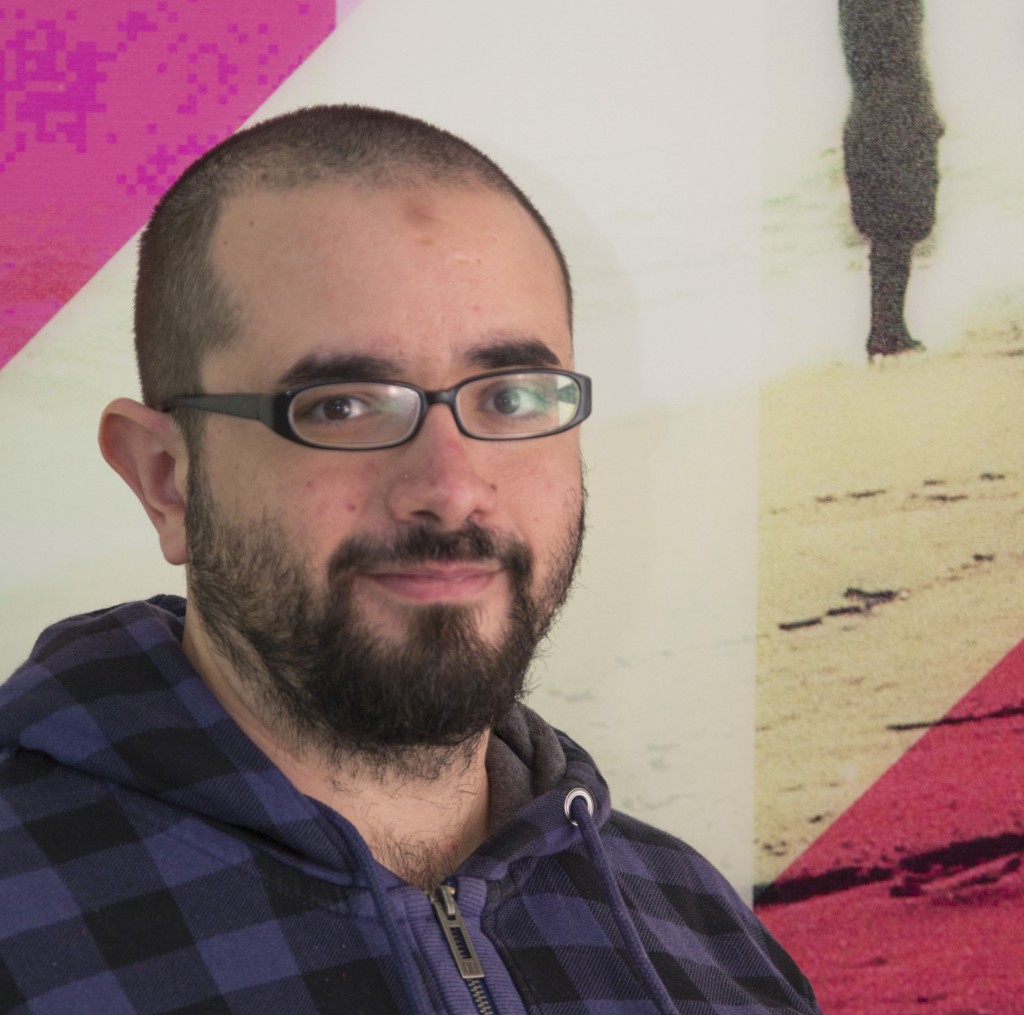Francisco Daviu
New year, new life, as we say in Spain. We want to begin this new year at DILO introducing you to our team of professionals, and thus we started interviewing one of our Spanish teachers, Francisco, who has kindly accepted to answer our questions.

Let’s start from the beginning ¿Where have you been teaching before joining DILO?
Before joining DILO I spent two years in India, working as a Spanish teacher in a language school. It was a very interesting experience, and I had the opportunity to learn a lot.
Which are your hobbies?
Well, the typical, reading books, cinema, going on excursión, travelling. The truth is that lately I don’t have too much time for my hobbies. I like also music, and I used to play in a traditional music band, but, as with my other hobbies, nowadays I don’t have enough time to rehearse and make some noise. I also like very much to learn new languages, and practice them!
Why do you teach Spanish?
I have been interested in teaching since my childhood. Before going into college, I knew I wanted to be a teacher. Moreover, I have been studying foreign languages since I was a child, hence, the teaching and learning of foreign languages has been one of my particular areas of interest.
Which is the main motivation of the students who come here to learn Spanish?
I think that nowadays Spanish is trendy. Currently it’s one of the most spoken languages in the world, and Hispanic culture is really appealing and vibrant; let’s think about Latin music, for instance, we can hear it in every corner of the world. Therefore and taking into account it is necessary to know Spanish in order to enjoy and participate in the Hispanic culture, this is a motivation that compels people to learn it.
Is it hard to learn Spanish? Which are the main difficulties students face?
The million dollar question! During my years teaching Spanish, I have found all kinds of opinions about this issue. Some students say Spanish is quite easy, because it is written as it is spoken, others believe that Spanish is really hard because of its verbal system.
We shouldn’t forget, however, that there are not “easier” or “harder” languages, at least in absolute terms. Everything depends on the languages that the student already speaks. So, for Romance language speakers, such as French or Italian, Spain is easy; for Germanic language speakers, like English or German, maybe a Little bit more difficult.
Nevertheless, it’s true that mastering the verbal system, specially the differences between imperfect and perfect, or the subjunctive, it is maybe the hardest thing about Spanish.
What is your advice for those who want to learn Spanish?
Let them start! I heard a quote somewhere, stating “The thousand kilometers journay starts with a single step”, and it truly applies to language learning; we shouldn’t wonder if it is more or less difficult, or if it is going to take more or less time. We have just to start.
Said this, I would advice them to surround themselves with Spanish; watch TV in Spanish (at the beginning with subtitles, of course), read things in Spanish when they have got already an amount of vocabulary, make Spanish speaking friends…. And, naturally, come to DILO!
Where is DILO?
DILO is located in Inca, a quiet town in the heart of Mallorca. Its location is really good, because from here you can easily get to anywhere in the island. Also, unlike other places in the island, Inca has been left largely untouched by massive tourism, so it’s the ideal place to enjoy the Mediterranean lifestyle, with its calm and familiar environment. I am originally from Palma, but some years back moved here, and here I remain.
What’s different about DILO’s teaching style?
DILO is a new concept in Spanish learning. We start from the idea that a language is not merely a syllabus, but a skill, an ability of doing something; in this case, to communcate. Often, students invest a lot of time learning vocabulary and grammar by hearing, and testing their knowledge by doing exercises; but when they face a real communicative situation on the street, they remain speechless, like they don’t know nothing; that’s because they learn “about” the language, instead of learning the language, that is, developing the ability to express themselves in the target language. This last thing is what we focus in DILO; of course, we don’t forget the grammar and vocabulary (learning “about” the language is also necessary to learn the language), but we like to actively engage the student.
In short, I would like to add the following to summarize. As you go inside DILO, you can see a famous quote from Benjamin Franklin written on a wall: “Tell me and I forget, teach me and I may remember, involve me and I learn”. I think this sentence sums up very well the concept of DILO, we want to engage, to involve our students in the learning process.
Which is the most interesting part of your work?
Well, generally all what we do is interesting, but if I have to pick one activity, it would the outings and excursión we do with our students, where we have the opportunity to practice Spanish and learn more about Mallorca.
Can you narrate any interesting anecdote?
Only one? Well, if I have to choose one, it is something what happened in the street market of Sineu, in one of our excursions. Sineu is a small town close to Inca that managed to keep its traditional mallorcan caracter and every Wednesday its market is an unique opportunity to get lost in the smells and flavours of Mallorca. As I said, during our excursions we try to make our students to speak and do things in Spanish; we wanted to visit the Palace of the Kings of Mallorca, one of the historical buildings of Sineu, and our student, whose mother tongue was German, asked for directions to somebody, of course in Spanish. The man turned out to be German! But, although, at the beginning he started his answer in German, once he realised that our student wanted to practice her Spanish, quickly switched to Spanish (which he could speak quite well) and kindly explained her in Spanish how to go.

